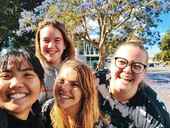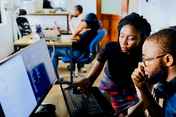How to use this toolkit
This toolkit is a guide for communities to deliver the UNICEF Canada Community Child and Youth Well-being Survey. It is a comprehensive, turnkey resource for communities to independently implement the survey, following a licensing agreement with UNICEF Canada. It guides the actions and provides the resources that are required (established in the UNICEF Canada Licensing Agreement) and those that are optional or can be adapted to suit the community.
.jpg)
The toolkit will support you on a journey through the data cycle on which the survey process is based.
The minimum requirements to deliver the Community Child and Youth Well-being Survey are established in the UNICEF Canada Licensing Agreement. Once the Licensing Agreement is signed by the community parties and UNICEF Canada, UNICEF Canada will provide a Survey Kit that includes the survey questionnaire catalogue, consent forms, a presentation template and branded assets.
This toolkit provides further guidance related to the licensing requirements, such as the expectation that young people have meaningful participation opportunities and the role of a research/data partner in protecting privacy and sharing data. It also contains optional, complementary good practices, advice and resources that have been co-created with other communities in Canada that have used the Community Child and Youth Well-being Survey:
- The project calendar outlines a basic framework for key activities and timelines following the four-stage data cycle.
- Each section of the toolkit explains the information and activities that support the implementation of each stage of the data cycle.
- The appendices are organized according to the data cycle and provide samples of materials, resources, templates and detailed instructions.
There is considerable scope for community decision-making and adaptation. You can build on the toolkit ideas and create more of your own. Use the toolkit to spark your creativity and fire your enthusiasm! The toolkit will continue to evolve as participating communities develop new insights and approaches to the survey process.





































